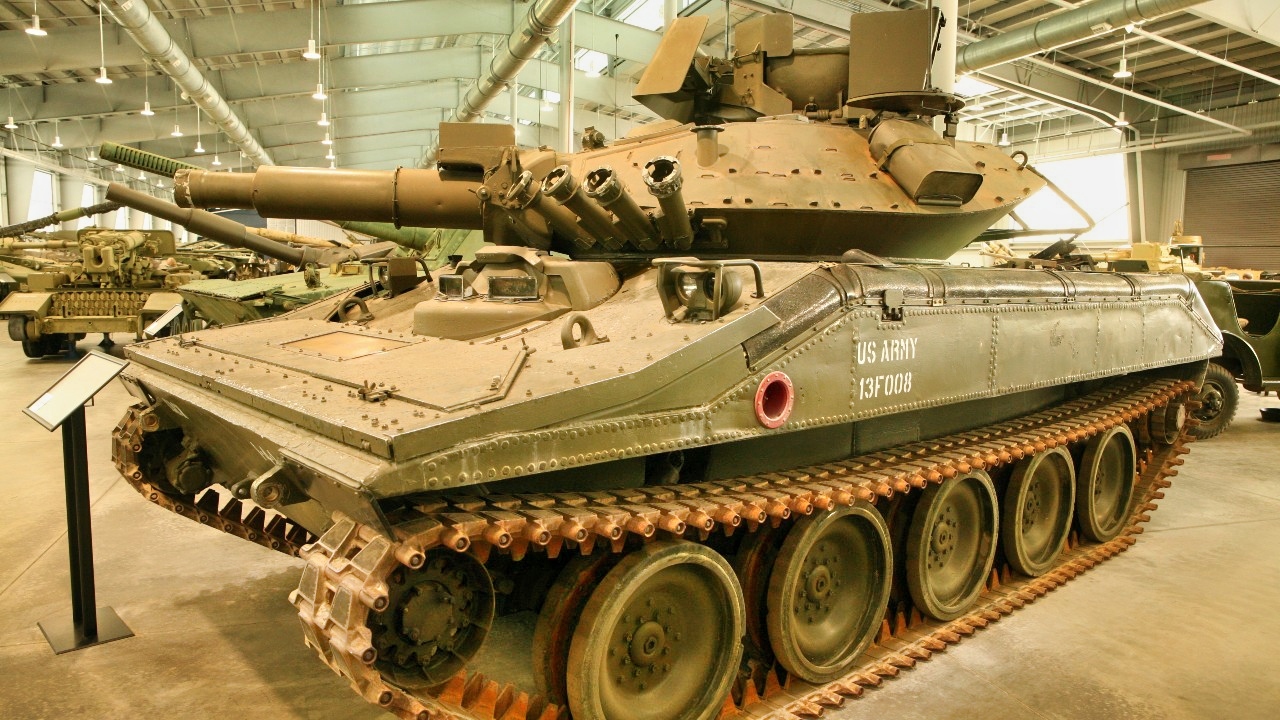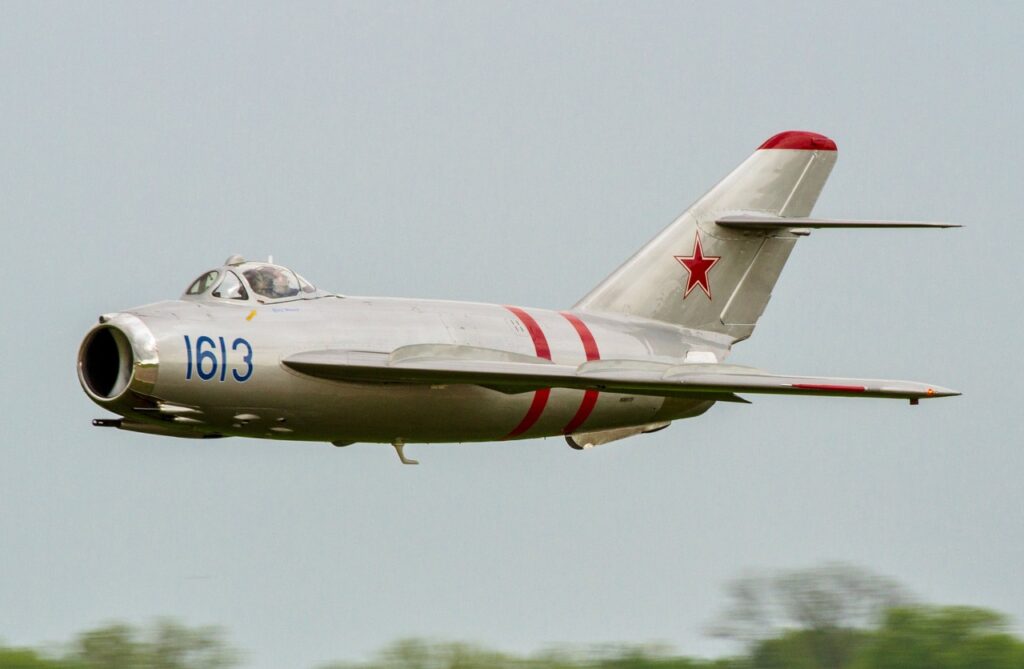
M551 Sheridan: The U.S. Army’s Light Tank Was No Pushover
Summary and Key Points: The M551 Sheridan, a U.S. Army light tank used from 1969 to 1997, exemplified the role of light tanks in specialized military operations despite its flaws.
-Developed as an Armored Reconnaissance/Airborne Assault Vehicle, the Sheridan featured a 152mm XM81 gun launcher capable of firing both conventional rounds and MGM-51 Shillelagh anti-tank missiles. It saw combat in the Vietnam War, Panama, and the Gulf War but was criticized for its low survivability and complex weaponry.
-Despite its shortcomings, the Sheridan was an asset in various conflicts before being retired in 2003 and now serves as a museum piece.
The M551 Sheridan: A Lightweight Powerhouse in U.S. Military History
One of the major lessons of the First World War was the power of mobile armored units, in a word, tanks. Towards the end of the war, these vehicles were the only things capable of coming close to breaking the trench stalemate that defined the Western Front. The interwar years saw much development of this technology, made possible by metallurgic refinements and more powerful engines. The Second World War cemented the tank’s place in modern combat, and tanks have been a centerpiece of armies since then.
During both World Wars, the U.S. categorized tanks into light, medium, and heavy, defined initially by their weight and later on by specific tactical uses. The post-war years saw the development of the main battle tank (MBT) model as heavy tanks became logistically impractical and light tanks were subsumed by armored cars or infantry fighting vehicles (IFVs). Despite the widespread adoption of MBTs, light tanks persisted in more specialized roles, particularly reconnaissance and airborne assault. The M551 “Sheridan”, employed by the U.S. Army from 1969-1997, perfectly encapsulates this idea.
Meet the M551 Sheridan
In the late 1950s, the U.S. Army was seeking to replace its fleet of M41 Walker Bulldog light tanks. Initial designs were similar to the M41, mounting the same cannon but reducing weight elsewhere to improve speed and range. The arrival of the Soviet PT-76, however – with its ability to swim rivers – changed the Army’s requirements and sent designers back to the drawing board.
While most of the service was transitioning to the M48 Patton MBT, the Army still wanted to produce an Armored Reconnaissance/Airborne Assault Vehicle. After several contest rounds, Cadillac was selected to produce the new vehicle. Their design included a four-man crew and a three-man turret, which the Army favored over the two-man turret in competing designs.
One of the biggest challenges of the M551s design was its armament. Weapons are one of the main weight sources on a tank and the 152mm XM81 gun launcher installed on the Sheridan was lighter than the 150mm M68 despite being a higher caliber. Notably, the XM81 was able to fire not only conventional High Explosive Anti-Tank rounds but was also designed with the MGM-51 Shillelagh anti-tank missile in mind. This capability was essential because the low muzzle velocity of the short-barreled 152mm gun made tracking and hitting moving targets such as tanks difficult.
As with any experimental technology, the XM81 had some drawbacks. When the Sheridan first entered service, the MGM-51 was not ready, so the tanks shipped with only conventional 152mm rounds. When they finally did receive the missiles, it was found that launching them led to damage and eventually cracking around the breech of the gun. The breech mechanism itself was the source of headaches for crews of the Sheridan. The ammunition used consisted of a projectile fixed to a combustible-cased propellant charge. Because of their combustible casing, the ammunition lacked a standard case that would be ejected from the breech following firing. This could lead to a dangerous buildup of gasses in the breech. The design work around this used compressed air to clear the mechanism between firing. While this prevented unintended detonation of freshly loaded ammunition, it required the loader to wait for the breech mechanism to clear itself and reset, which limited the speed at which the tank could fire. For a comparison, the M48 MBT could fire up to seventeen rounds in one minute of continuous firing. During that time, the M551 could only fire two.
Despite several design flaws, the Sheridan was completed just in time for the Vietnam War. While General Westmoreland, the first head of Military Assistance Command Vietnam (MACV), had prevented the deployment of M551s due to a lack of 152mm ammunition, by the time his successor, General Abrams, stepped into the role, there was sufficient stockpile of rounds. He ordered the Sheridan’s deployment to two Cavalry squadrons, one with the 4th Cavalry Regiment and one with the 11th Armored Cavalry Regiment, commanded by Colonel Patton IV, the son of the famous tank General Patton of WWII fame.
M551 Sheridan Combat Tested
Following their initial deployment for testing, the Sheridan saw widespread use in the Vietnam War.
While the infantry were glad to see them on hand to provide direct fire support, they received marginal to mixed reviews from the crews and commanders.
In its fire support role, it proved highly effective as its 152mm cannon fired at a slow enough speed not to over-penetrate hard targets – meaning its shaped charge explosives actually detonated inside things like bunkers instead of simply punching through them. Furthermore, it could be loaded with canister rounds containing thousands of flechettes which proved deadly in jungle combat.
Its light weight had both advantages and disadvantages. While it did not get bogged down in the mud or suffer damaged tracks nearly as often as its weightier M48 cousin, it was less effective at “jungle busting,” clearing a path through dense foliage.
The aluminum hull that contributed to its light weight also contributed to its low survivability. It could easily withstand up to 7.62mm machine gun fire but was very vulnerable to RPGs and mines. Furthermore, the caseless ammunition was prone to detonation in the case of fire or heat, such as following an RPG hit or mine explosion. Standing procedure dictated the crew immediately abandon the tank following a hit. These experiences caused the Army to realize the faults of the Sheridan. By the end of the 1970s, it had begun retiring its fleet.
Before it was completely decommissioned, the Sheridan saw combat several more times. It saw limited action during the First Gulf War, the only time it fired the MGM-51 Shillelagh in anger. During Operation Just Cause in Panama in 1989, the Sheridan earned the distinction of becoming the only tank ever airdropped into combat. Reports indicated that it was an effective asset as the opposing forces did not expect to face armor.
As the M551 was retired, it took on its final role serving as opposing force (OPFOR) at the National Training Center in Fort Irwin, CA. There it played the role of primarily Soviet and Warsaw Pact tanks, with visual modifications dressing it up as BMPs, T-72s, and other tracked vehicles.
By 2003, it was the end for the M551 Sheridan, and now it can be found only in museums.
About the Author: Maya Carlin
Maya Carlin is an analyst with the Center for Security Policy and a former Anna Sobol Levy Fellow at IDC Herzliya in Israel. She has by-lines in many publications, including The National Interest, Jerusalem Post, and Times of Israel. You can follow her on Twitter: @MayaCarlin.
Image Credit: Creative Commons.


